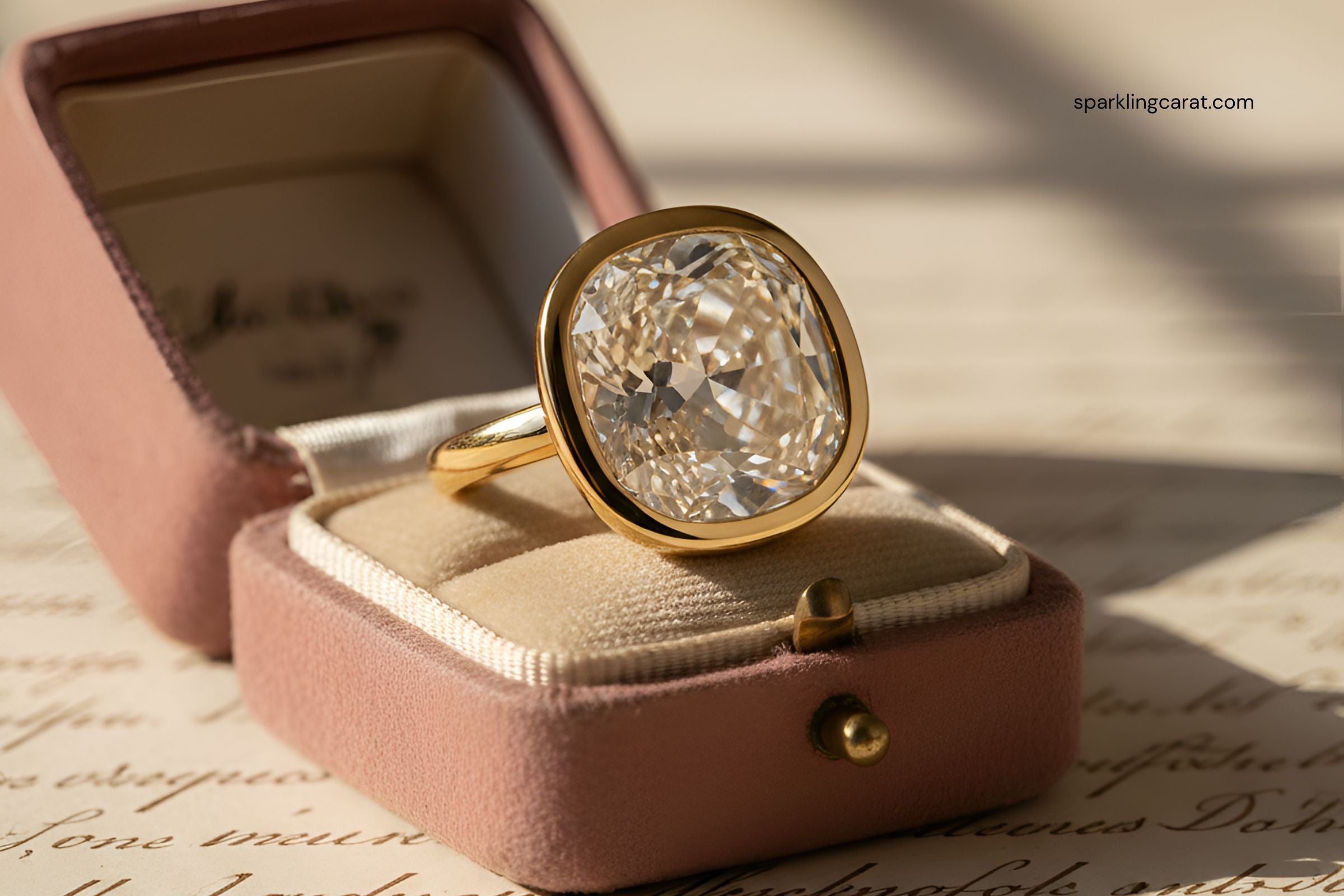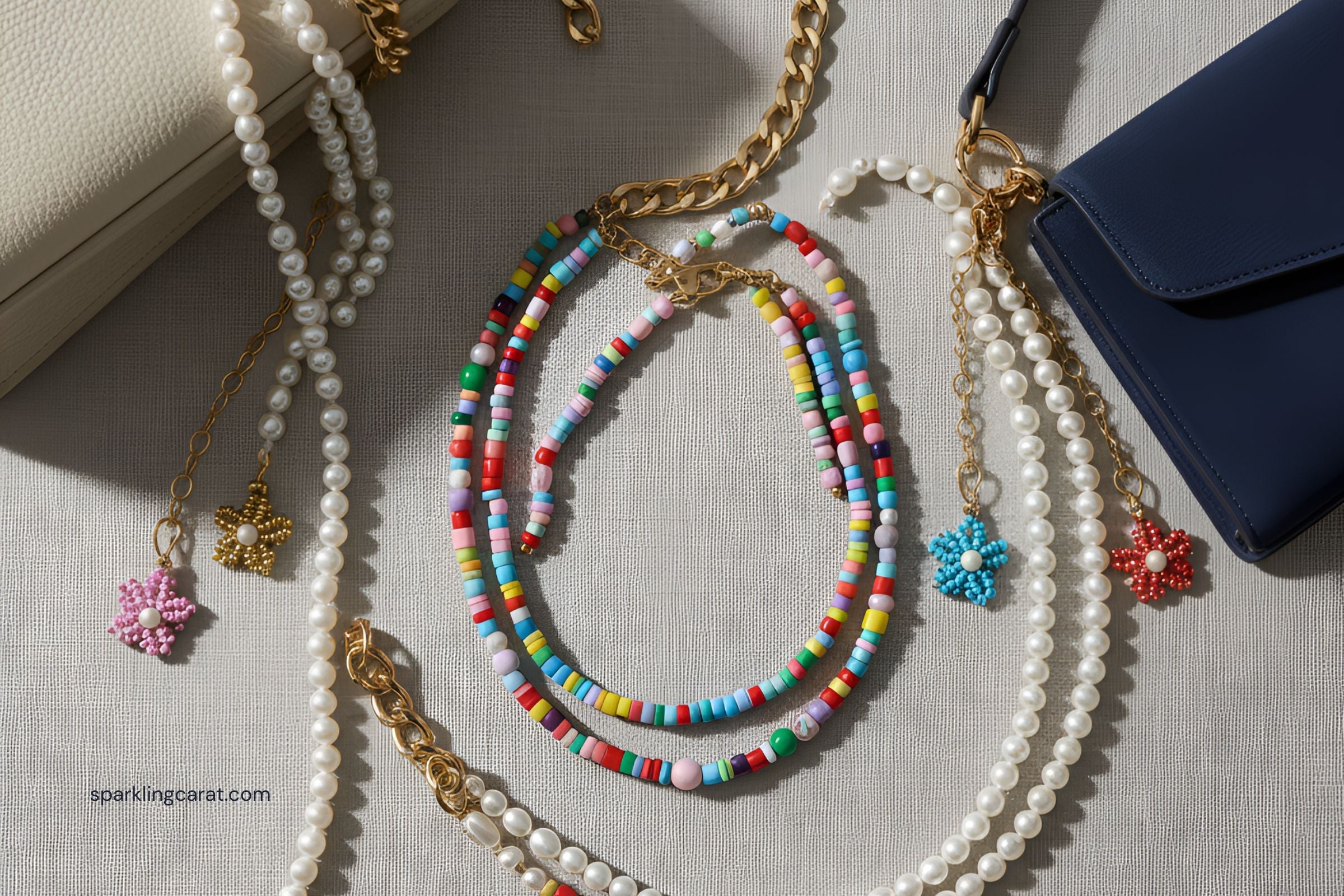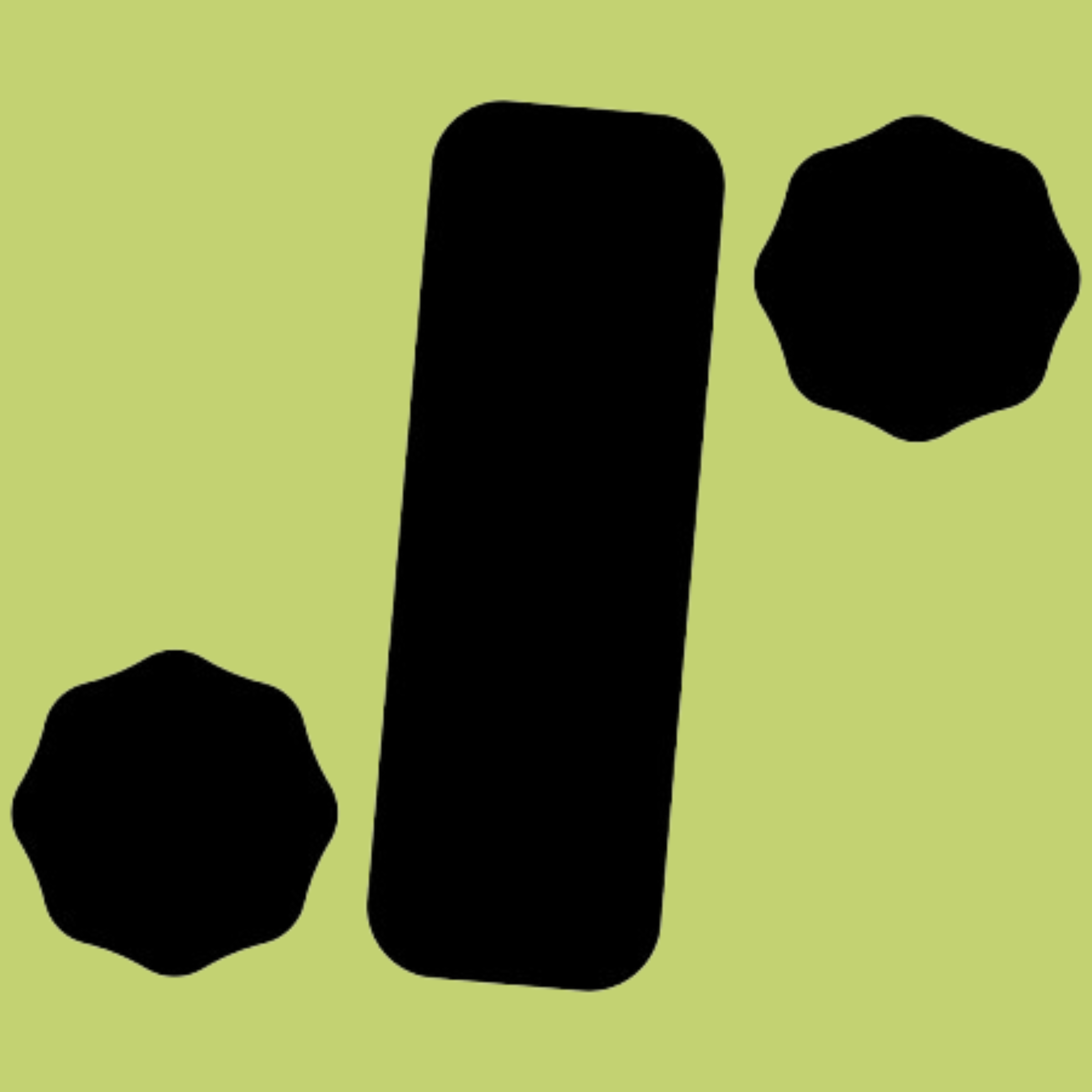Pear-Shaped Engagement Rings: Elegance & Flattering Silhouettes Taking Over in 2025
If one engagement ring style embodies romance and refinement in 2025, it’s the pear-shaped diamond. Also called the “teardrop,” this hybrid cut (half brilliant round, half marquise) offers a unique blend of classic and modern. Long a favorite of royalty and red-carpet stars, pear shapes are now dominating search trends and bridal mood boards.
Their appeal is multi-layered: a flattering elongated silhouette, a distinct but timeless look, and versatile styling potential, from minimalist solitaires to ornate halos. Today’s couples also appreciate how pear shapes offer visible size-per-carat advantages, giving more finger coverage for the same weight compared to round brilliants. In this article we’ll unpack why pear-shaped engagement rings are trending in 2025, how they’re cut and graded, which settings best highlight their elegance, and how to shop responsibly (including sustainable and lab-grown options).
What is a pear-shaped diamond? A hybrid of brilliance and grace
A pear-shaped diamond combines the rounded end of a brilliant cut with the pointed end of a marquise, creating a teardrop silhouette. This cut dates back to the 1400s (invented by Flemish cutter Lodewyk van Bercken), but its current form, with 58 facets and optimized proportions, was refined in the 20th century.
Key features:
-
Rounded end + pointed tip, gives an elegant taper.
-
Elongated shape, creates a slimming, lengthening effect on the finger.
-
Brilliant faceting, same facet pattern as a round brilliant for maximum sparkle.
-
Bow-tie effect, a natural light pattern across the center; a well-cut stone minimizes it.
Pear shapes offer a large face-up appearance per carat weight, making them an excellent choice for couples seeking a bigger visual impact at a given budget.
Why pear shapes are trending in 2025
Celebrity and influencer impact
Like many jewelry trends, celebrity rings drive mainstream interest. High-profile proposals and social media reveals featuring pear-shaped engagement rings have spiked searches on Pinterest, Instagram and Google. Stylists and editors at bridal magazines are calling the pear shape 2025’s “it cut” for its balance of classic sparkle and distinctive silhouette.
The quest for individuality
Brides today want rings that feel personal. Round brilliants remain classic, but their ubiquity leaves some shoppers craving a signature look. Pear shapes achieve this while remaining timeless, not as unconventional as an Asscher or trillion, but not as common as a round or princess cut.
Flattering proportions
The elongation flatters the hand, making fingers appear longer and more slender. This effect resonates with shoppers who want both beauty and a style advantage.
Sustainability & lab-grown innovation
With the rise of lab-grown diamonds and recycled metals, pear shapes are widely available in ethical and budget-friendly options. Some brands are cutting lab-grown pear shapes specifically to maximize brilliance and minimize bow-tie shading, making the cut more accessible. (Link internally to Sustainable Jewelry Spotlight: Recycled Metals & Fair-Trade Sourcing.)
Anatomy & grading: what to look for in a pear-shaped diamond
Because pear shapes are fancy cuts (not standardized like round brilliants), proportions vary more widely. Here’s what to consider:
-
Length-to-width ratio
-
Classic look: 1.45–1.55 (balanced)
-
Slim/elongated look: 1.6+
-
Shorter/”chubby” look: 1.3–1.4
-
-
Symmetry
-
Both halves should mirror; shoulders and wings should be even.
-
The pointed tip should align with the apex of the rounded end.
-
-
Bow-tie effect
-
All pear shapes show some; avoid overly dark bands.
-
-
Point protection
-
Choose a setting with a prong or bezel at the tip to prevent chipping.
-
-
Color & clarity
-
Because pear shapes have larger open areas, color can be more visible. Many buyers opt for one color grade higher than they would in a round brilliant.
-
Tip: Always view the stone in person or via high-quality video. Fancy shapes vary widely, and the cut quality dramatically affects beauty.
Best settings for pear-shaped engagement rings
The right setting enhances both the stone and the hand.
-
Solitaire
-
Timeless and elegant; lets the shape speak for itself.
-
-
Halo
-
A border of pavé stones amplifies size and sparkle.
-
-
Hidden halo
-
Modern twist, adds subtle glimmer beneath the stone (link internally to Bridal Trends 2025: Hidden Halos, Colored Diamonds & Oval Solitaires).
-
-
Three-stone
-
Side stones (trillions, tapered baguettes, or half-moons) frame the center pear beautifully.
-
-
East-west setting
-
Places the pear horizontally; avant-garde yet refined.
-
-
Mixed metals
-
Yellow gold warms the stone’s brilliance; platinum provides a cool contrast (link internally to Mixed Metal Magic: How 2025 is Breaking Jewelry Rules).
-
Orientation choices: point up or down? Traditionally, the point faces the fingertip (slimming effect), but some prefer reversed for a bolder statement.
Pear shapes beyond diamonds: colored stones & trends
2025 sees a rise in colored pear shapes, sapphires, morganite, aquamarine, even fancy-colored diamonds. This aligns with the movement toward personalized, unconventional rings. (Link internally to Rings That Pop: Morganite, Turquoise & Spring Stones in 2025 Jewelry.)
Colored pears pair beautifully with diamond halos or mixed-gem settings, blending vintage romance with contemporary color trends.
Ethical & budget-friendly shopping tips
-
Lab-grown diamonds
-
Offer 30–40% savings vs mined; available in top-tier cuts.
-
Reduced environmental footprint. (Link internally to Smart Jewelry & Tech: The Rise of Functional, Stylish Wearables, section on ethical tech and sourcing.)
-
-
Recycled/antique settings
-
Commission a jeweler to set a lab-grown or vintage stone in recycled metal.
-
-
Custom CAD previews
-
Many jewelers now provide high-fidelity CAD renders so you can visualize proportions before purchase (link internally to From Concept to Content: Jewelry CAD Renders and Designer Insights).
-
-
Insurance and certification
-
Get a gemological report (GIA/IGI) and insure your ring.
-
Styling & stacking ideas
Pear-shaped engagement rings pair well with:
-
Chevron or V-shaped wedding bands, hug the pointed tip.
-
Stacked thin pavé bands, highlight elongation.
-
Mixed textures, matte wedding bands with high-polish engagement ring for contrast.
In 2025, “curated stacks” remain strong. Brides mix classic and modern bands around a central pear ring for a unique signature look. (Link internally to Ear Stacking as Self Expression: Curating Your Own Ear Curation for a broader “stacking” aesthetic trend.)
Market outlook: will the trend last?
Industry insiders believe the pear shape will stay popular beyond 2025. Reasons:
-
Long history and timeless appeal.
-
Modern cutting technology has improved bow-tie and symmetry issues.
-
Wider availability in lab-grown and ethically sourced stones.
-
Aesthetically versatile, from minimalist to maximalist settings.
This blend of tradition and modernity gives the pear shape staying power.
Conclusion, a flattering classic reimagined
Pear-shaped engagement rings marry elegance, individuality and flattering proportion. Their surge in 2025 reflects a broader bridal trend: couples want designs that feel personal, ethical and distinctive yet timeless. Whether you choose a classic diamond solitaire, a colored pear in a halo, or a lab-grown stone in a recycled setting, the pear shape delivers sparkle with a signature silhouette that stands apart.






Leave a comment
This site is protected by hCaptcha and the hCaptcha Privacy Policy and Terms of Service apply.